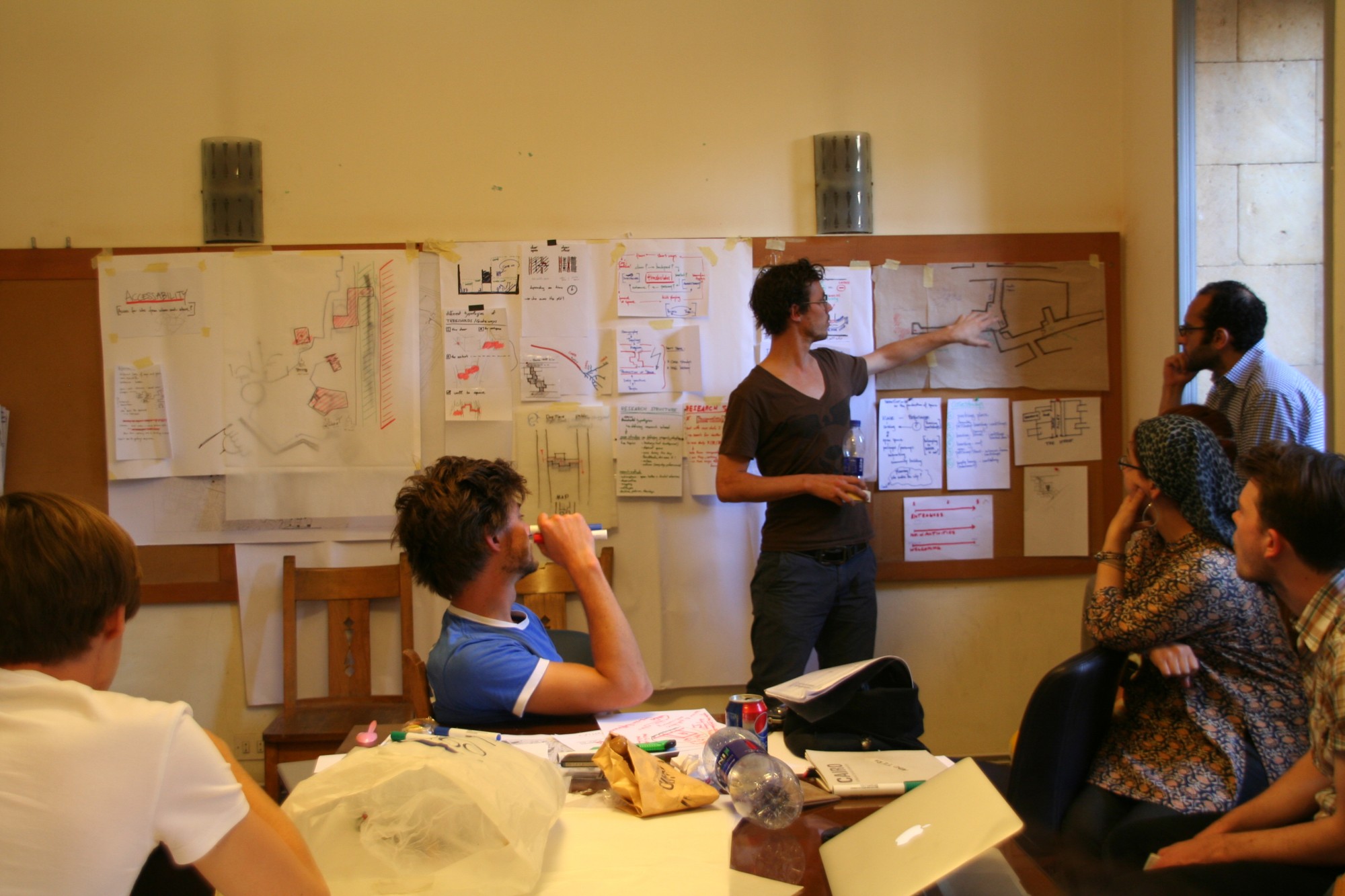Work Live Learn
Lukas Grellmann
Unlike as in Hamburg, the workshop participants didn’t live and work in one building, let alone in a building like the University of the Neighbourhoods. German participants and organisers resided in the Cairo University guesthouse. It is located directly adjacent to the faculty of economics and political science, to which the CCSDC, the partner research centre, belongs and where some of the input sessions and the final exhibitions were held. Egyptian participants and organisers commuted from their homes and places of residence in Cairo. While this may have affected the overall coherence of the group, it equally represented the realities of most Cairenes who often have to deal with long commutes for assemblies and get togethers. And while this took a toll on the social time participants were able to spend in the neighbourhood together, it was the fastest and most efficient way to tap into the spatial-temporal rhythms of living and working in Cairo. Most urban practitioners usually don’t live in the neighbourhoods they work in.
The commute from Cairo University to Al Darb Al Ahmar for the German participants was essential to give them a feel for the position and location of the neighbourhood in the broader context of Cairo. Unlike the Veddel, Al Darb Al Ahmar is not an island and its identity as a distinct neighbourhood relates very much to its surrounding and history. The participants walked through Cairo University campus, Al Darb Al Ahmar Community Development Company, a restored school that functioned as working space in the neighbourhood during the workshop, and Al Darb Al Ahmar neighbourhood itself.
»During the entire time in Cairo, we repeatedly met certain limits. Some of these were visible, some only noticeable. For example, the university’s guesthouse was a place surrounded by these boundaries. The first for me was to leave the house alone and step over the campus boundaries where I was absolutely struck by its appearance. Everything asked for a degree of attention that I was not used to in my daily life. Another visible boundary was the fence that surrounded the large campus. Along this fence, there were several entrances through which one could enter or leave the university. Once outside the campus, there was a third boundary: traffic. Roads with 5 to 8 lanes without a crossing light. The trick, as we were told by people, was to establish eye contact with the oncoming motorists and hurry to cross the street.« – Lene Benz

»We had the sociologists doing a map while the architects describe. This was one exercise how it would be because we see it in different ways. If I as an architect do it, I do a map. I would do it with proportions in scale because this is how I work. The sociologist would see something else. So what we did is that I described the space and the sociologist mapped it. The outcome is that we both try to see with someone else’s eyes.« – Mohamad Abotera
»We need to have a different understanding of politics, a different definition of politics. What is politics on the local level, on the micro level? What is politics in the informal aspects of our lives? And you see that those informal areas compose 65% of Cairo. The majority of our lives is taking place in the informal zone, so you need to understand politics as it takes place – and here is the importance of this project.« – Mohamad Soffar
»The surprising thing for me was that all those pieces of work focused on the overlapping of different meanings of space – planning and setting the patterns for action meant that it’s not really about transformation. We called the workshop Cairo Urban Transformation. But really what has struck me and as I think back to what Christopher Dell stressed, it is more Improvisation Cairo. This is pure improvisation and indeed in its purest form...« – Bernd Kniess


